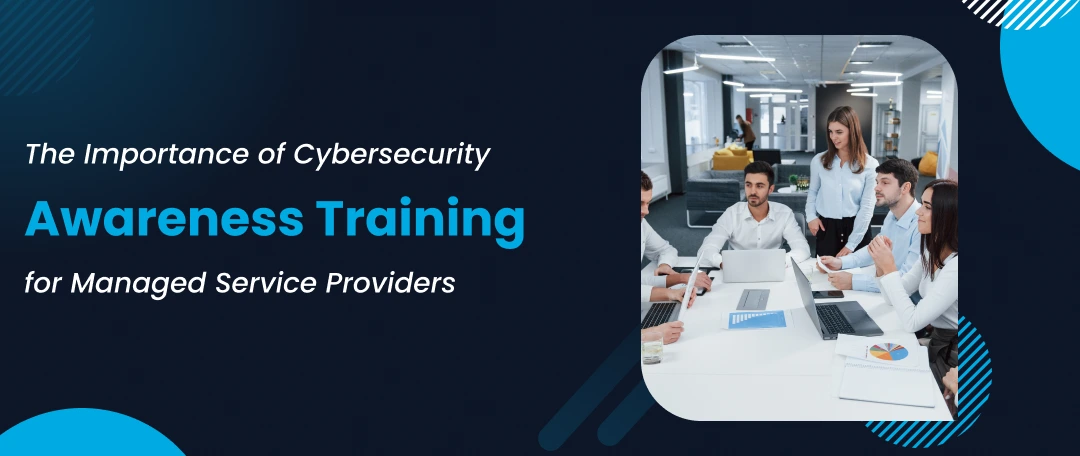Cyber threats are growing more common and can cause serious problems, such as loss of data or damage to client trust. Attacks like phishing and ransomware show why good cybersecurity is so important. Managed Service Providers (MSPs) play a big part in defending clients from these threats. One of the best ways to do this is by offering cybersecurity awareness training, which teaches employees how to spot and handle risks.
Understanding Cybersecurity Awareness Training
Cybersecurity awareness training teaches employees how to identify, avoid, and report various cyber threats. The main goal is to build a security mindset within each company. When people understand what a phishing email looks like or how ransomware starts, they can stop it before it does any damage.
Types of Training
1. Online Training
Includes interactive modules, videos, and quizzes. Employees learn on their own schedule.
2. In-Person Training
Led by cybersecurity experts. Good for real-time feedback, live discussions, and hands-on guidance.
3. Hands-On Simulations
Uses realistic scenarios where employees practice responses to attacks, like phishing tests.
Studies show companies with engaging, interactive training have a 48% boost in employee attention (source: SANS Institute).
Annual Cybersecurity Awareness Training: A Must for MSPs

Because cyber threats change quickly, it’s vital to refresh employee knowledge at least once a year. As an MSP, offering yearly training keeps your clients’ teams ready for new attack methods.
Structuring a Successful Annual Training Program
Content Variety: Videos, in-person workshops, and interactive quizzes help different learning styles.
Interactivity: Let employees discuss real-world scenarios and share experiences.
Feedback Mechanisms: Collect feedback to improve future sessions.
Research shows that regular training can cut down on cybersecurity incidents by up to 45% (source: TrueSec).
Learning from the Army: Cybersecurity Training Standards
Military training often uses clear steps and regular drills. This can be helpful in a business setting, too.
Discipline: Consistent protocols keep everyone on the same page.
Simulation-Based Learning: Training under real pressure helps employees react quickly.
Evaluation and Adaptation: Test results reveal what needs fixing, and you can update lessons accordingly.
Reports say that companies adopting these ideas see faster responses during real attacks (source: CybersecurityIQ Training).
Engaging Techniques for Effective Cybersecurity Training
Gamification: Add quizzes or competitions for a more enjoyable learning experience.
Phishing Simulations: Send test emails to see if employees can spot them.
Real-Life Scenarios: Show real events or case studies to highlight day-to-day risks.
Organizations using these methods may see a 60% rise in knowledge retention.
Addressing Common Misconceptions
• “It’s Only for IT Staff”: In reality, every person who clicks on links or opens email attachments has a part to play in security.
• “Smaller Companies Are Safe”: Hackers know small businesses often have weaker defenses, so they are frequent targets.
When these myths are corrected, your clients’ employees begin to see their role in protecting company data more clearly
Continuous Learning Beyond the Annual Training
Annual training is important, but ongoing education is key to building real security awareness. Here’s how:
Micro-Learning Modules: Break lessons into short sessions all year long.
Regular Updates: Keep employees current on new threats through short newsletters or videos.
Accessible Resources: Provide a helpdesk or platform that shares quick tips and refresher lessons.
These steps keep security top of mind and help employees respond well to new and changing threats.
Conclusion
Cyber threats are a steady risk to all organizations. Cybersecurity awareness training gives MSPs a direct way to reduce their clients’ exposure to common attacks. Remember, training works best when it’s part of a continuous plan, not just a once-a-year event. When you prioritize employee education, you boost client trust and build a stronger future for everyone.
If you want to deliver clear and simple cybersecurity training to your clients, ClipTraining can help. Our short, focused lessons and real-world examples keep employees alert and informed. Book a demo today to see how you can include ClipTraining in your MSP services. It’s a straightforward way to safeguard your clients and add more value to your IT offerings.


